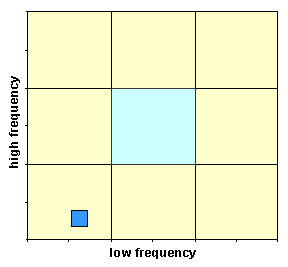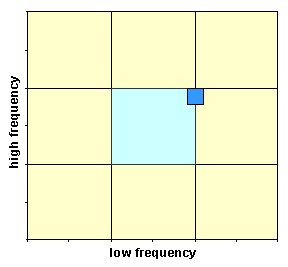
Pre and
Post HRV Measurements: Case Studies
Conducted by Joanne and Roger
Callahan, PhD.
This section contains actual HRV measurements taken on
individuals before and after treatment with TFT. We will provide a brief description of
the person, any known diagnoses, and any prevailing symptoms. For purposes of simplicity,
each case presented will only include what we feel are the most important parameters of
the HRV measurements, the SDNN (standard deviation of normal-to-normal heartbeats), the
Total Power (the total variance, activity, of normal-to-normal over the course of the
sample period), and the Autonomic Balance Diagram (shows relative change in Autonomic
Nervous System [ANS] balance before and after the TFT treatment).
The measures used here are the heart rate variability standards of measurement
recognized and standardized by the Task Force of the European Society of Cardiology and
the North American Society of Pacing and Electrophysiology for physiological
interpretation and clinical use.
NOTE: HRV measurement as presented here and as used in TFT practice is not
a substitute for proper medical diagnosis and care and is used in conjunction with TFT for
educational and research purposes. HRV and the relative balance of the ANS can
validate the deep physiological changes occurring with TFT procedures.
-
Case
Study # 1
59 year old physician (MD) suffers from severe depression for years,
nothing helps, feels hopeless regarding physical condition.
-
Case
Study # 2
36 year old physician (HRV expert). In the hospital. His heart had stopped
30 days before this treatment.
-
Case
Study # 3
Brief info about this 37 year old physician has been diagnosed with a
serious heart condition for a number of years. He worried constantly about this and the
treatment eliminated every trace of his worry.
-
Case
Study #4
44 year old who was born with a defective heart. Throughout his life he
has carried a note which explains his condition to emergency room personel.
Several years of chronic depression. Unresponsive
to other treatment attempts. Feeling hopeless. Taking thyroid medication. SUDS at a 10 for
depression.
BEFORE |
 |
 |
 |
 |
 |
Unit |
Record |
Ref. |
| SDNN |
ms |
32.2 |
(78.4-220.5) |

|

|

|

|

|
 |
Unit |
Record |
Ln |
Ref. |
Total Power |
ms
2 |
53.7 |
4.0 |
(7.2-9.1) |
|
|
AFTER |
 |
 |
 |
 |
 |
Unit |
Record |
Ref. |
| SDNN |
ms |
144.4 |
(78.4-220.5) |

|

|

|

|

|
 |
Unit |
Record |
Ln |
Ref. |
Total Power |
ms
2 |
6595.8 |
8.8 |
(7.2-9.1 |
|
Extremely low variability as measured by SDNN and
total power, the lowest power ever seen by experienced HRV experts. After treatment,
depression and hopeless feelings gone.. Spectacular increase in SDNN and total power.
Autonomic
Balance Diagram: BEFORE |
 |
|
|
Autonomic
Balance Diagram: AFTER |
 |
|
The PIP is far away from autonomic balance prior
to treatment. After treatment, autonomic nervous system much closer to balance.

|